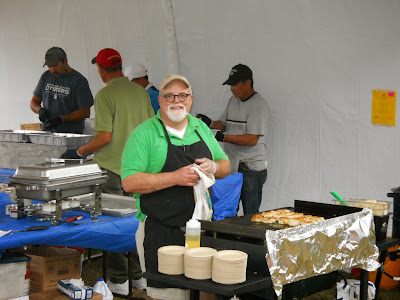This year we decided on the theme "Around the World on New Year's Eve." Here is the proposed menu that we will prepare:
Appetizer
Croustades au Duxelles
(Provence)
First Course
Shrimp and Smoked Oyster Chowder
(New Orleans)
Second Course
Insalata
(Calabria)
Main Course
Grilled Lamb Chops
(New South Wales)
Barbecued Short Ribs with Hoisin Sauce
(Asian Rim)
Accompaniments
Roasted Brussels Sprouts
(Belgium)
Istrian Potatoes
(Croatia)
Desserts
4 Berry Crumb Pie
(The Heartland)
a la carte Sour Cream Chocolate Cake
(San Francisco)
Artisanal Cookies
(Germany)
Hot and Cold Beverages of one's choosing
It's going to be a fun evening. The most difficult part will be trying to stay awake until midnight after eating all that food!!!
Best Wishes for a happy, healthy
and prosperous New Year!
Vinny
















 Introduced to Japan by Portuguese sailors in 1541, they were brought there from Cambodia and given the Portuguese name Cambodia abobora, which the Japanese shortened to kabocha. They have a knobby looking skin and are shaped like a squat pumpkin with a dull green finish and light striations. The interior is an intense yellow/orange color. Like other squash kabocha are used in many side dishes and soups. They can be baked, steamed, pureed, chunked, mashed or braised and are rich in beta carotene and contain large amounts of iron, vitamin C and potassium. Kabocha are grown in climates with a long growing season, world wide in countries like Japan, S. Korea, Thailand, Mexico, and New Zealand and statewide in California, Florida and sections of Colorado.
Introduced to Japan by Portuguese sailors in 1541, they were brought there from Cambodia and given the Portuguese name Cambodia abobora, which the Japanese shortened to kabocha. They have a knobby looking skin and are shaped like a squat pumpkin with a dull green finish and light striations. The interior is an intense yellow/orange color. Like other squash kabocha are used in many side dishes and soups. They can be baked, steamed, pureed, chunked, mashed or braised and are rich in beta carotene and contain large amounts of iron, vitamin C and potassium. Kabocha are grown in climates with a long growing season, world wide in countries like Japan, S. Korea, Thailand, Mexico, and New Zealand and statewide in California, Florida and sections of Colorado.


